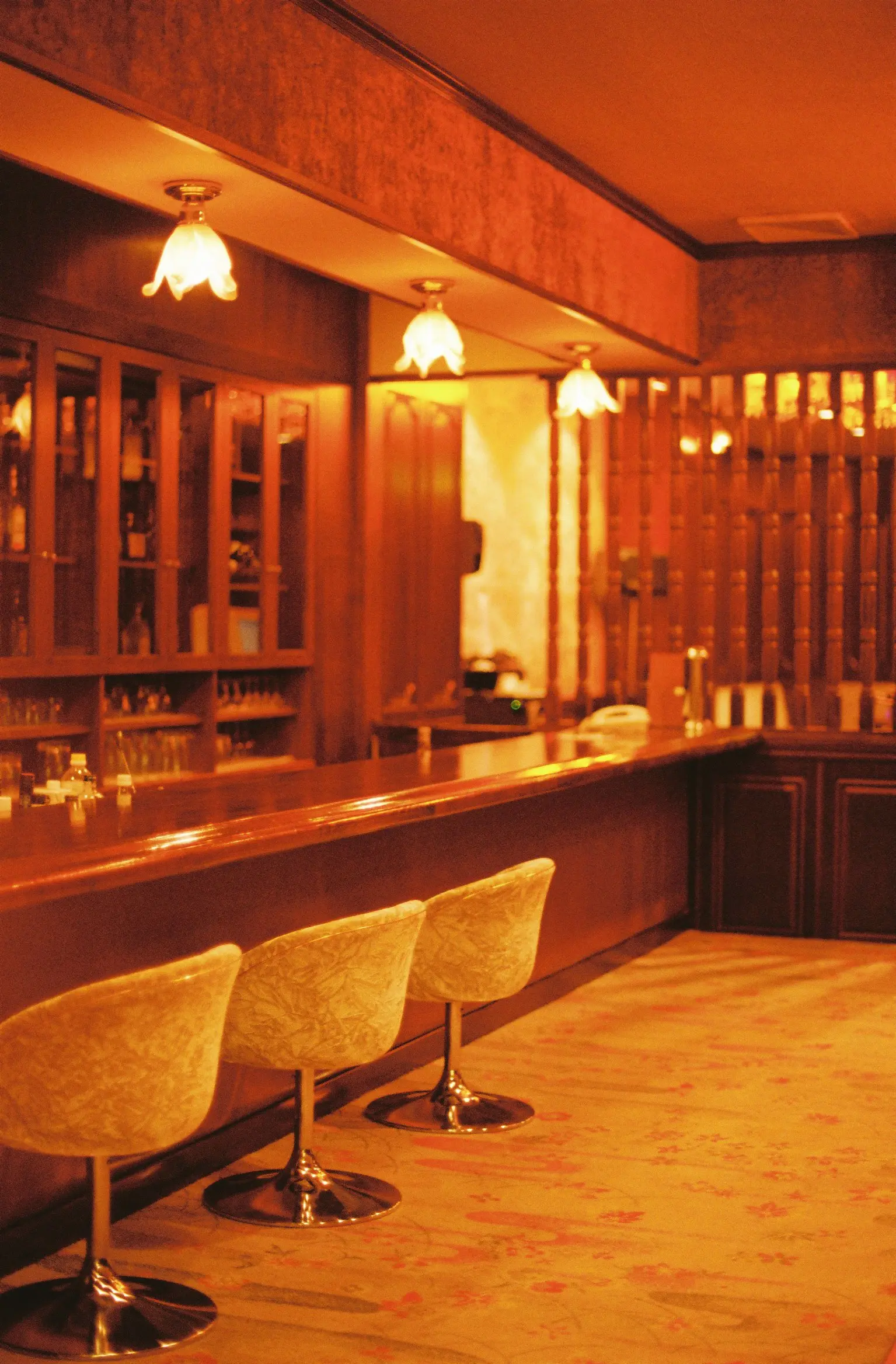This article appeared in Tokyo Weekender Vol. 1, 2025.
To read the entire issue, click here.
Perched on a mountain overlooking the sleepy beach town of Ito stands a dazzling white hotel that seems somehow lost in time. From its front emerges a distinctive, spaceship-like tube, stretching out across the parking lot like an extended arm; on its roof are three gigantic, rusted katakana characters that glow neon at nighttime: ha – to – ya.
This is Hatoya Hotel, an opulent remnant from Japan’s past — built before the pop of the bubble era, with views all the way out to the twinkling horizon. It’s a place I’ve been strangely obsessed with for a number of years. I love places that ooze nostalgia: kissaten, retro gaming parlors, faded hotels. But Hatoya Hotel stands in a league of its own; some say that it’s as close as you can get to traveling back in time, and this feels like a fair assessment.
From the moment that the hotel appears before you, the era we now inhabit begins to fade away. Once you step in the lobby, you’re in a new and separate dimension — not the modern world we’re living in, but the modern world we dreamed of.
Pigeon Magic
Hatoya Hotel first opened in 1947, when a businessman named Seiji Haraguchi purchased a 14-room traditional inn called Hatoya Ryokan. It is believed that the original owner was a magician who excelled at tricks with pigeons. (The “hato” in Hatoya means “pigeon.”) After buying the hotel, Haraguchi expanded it significantly, and in the 60s, it increased in popularity with an iconic TV commercial that many Japanese people, young and old, will remember with fond nostalgia. It begins, “If you’re going to Ito, you must go to Hatoya …” In 1975, sister hotel Sun Hatoya opened nearby, right on the seaside.
The lobby immortalized in those ads stands virtually unchanged today, still glittering with chandeliers and mirrors, though it’s notably less bustling. I found the place almost deserted when I arrived. At the reception desk, a kind-faced man suddenly appeared, as if by magic, to welcome me in for check-in. Next to the lobby, room wear is laid out for guests to pick up — yukata with pigeons printed all over. Continuing on, you’ll find the hotel’s signature aerial corridor.
A Hopeful Future
Hatoya Hotel’s main hallway is its architectural pièce de résistance, connecting the lobby to the secondary building. It has a curved ceiling lined with glittering lights, and its walls are bisected by a row of small, eye-shaped windows. The entire space is coated in a rich shade of orange.
In many ways, the hotel embodies the optimistic architectural visions of the Showa era (1926–89), when the future was an unknown and exciting place. At the time Hatoya was built, Japan was experiencing unprecedented transformation and economic affluence, and this was reflected in its bold and futuristic design choices. Stepping into the spaceship-esque tunnel feels like the boundary between here and there. The first time, my skin prickled, and I felt strangely emotional as the edges of reality softened around me.
A testament to its former opulence, Hatoya Hotel spans several levels, with amenities to keep you occupied for your entire stay, from a fluorescent-lit gaming parlor to an indoor pool to secret karaoke and mahjong rooms. Walking through the enormous, red-carpeted building, I wondered what was behind many of the closed doors. Despite its size, it feels like a permanent liminal space, frozen in time. It’s a bit like playing around in an old museum.
The hotel also has several onsen baths, outfitted luxuriously with volcanic stones from the Izu Peninsula. A classical sculpture of a reclining female figure reminiscent of Venus sits in the corner, and a cascading rock waterfall also acts as a cold plunge pool. Once I’d immersed myself to my heart’s content, I wandered in my yukata through Hatoya’s many halls and sitting areas, drinking beer from vending machines and getting my back gnawed at by an old massage chair.
I sang karaoke at Bar Hana, the most exquisite bar I have stepped foot in, with its mahogany trims and flocked velvet sofas covered in cigarette burns that were put there well before I was born. At 9 p.m., the in-house ramen restaurant opened its doors for late revelers and ramen lovers, serving up a soy sauce broth with boiled pork, green onions, seaweed and bamboo shoots. Returning to my room, I slept silently and deeply.
A Meeting Place
The thing that most intrigues me about Hatoya Hotel is that it represents how the future was imagined: smooth curves, bright colors and an optimism that glistened in every design choice. Where some might see a charmingly retro space brimming with anachronisms, I see an unmistakable sense of hopefulness and excitement, palpable even after all these years. Everything stands suspended between what was and what could have been: the past that has yet to recede and the future that never arrived, meeting at a hotel on a mountain.
Hatoya Hotel has always been a place of time travel for people — it’s just that the direction has changed.
For more information about Hatoya Hotel, visit its website.

















